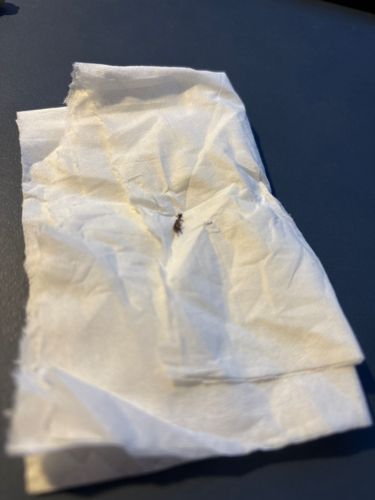Flea (likely Cat flea or Dog flea)
Scientific Name: Ctenocephalides felis (Cat flea) or Ctenocephalides canis (Dog flea)
Order & Family: Order Siphonaptera, Family Pulicidae
Size: 1-3 mm

Natural Habitat
Fleas primarily live on the bodies of warm-blooded animals (mammals and birds) and in their immediate environment, such as bedding, carpets, and cracks in floors.
Diet & Feeding
Adult fleas are obligate hematophagous parasites, meaning they feed exclusively on the blood of their hosts. Larvae feed on organic debris, including adult flea feces (flea dirt).
Behavior Patterns
Fleas are wingless insects known for their ability to jump long distances. They undergo complete metamorphosis (egg, larva, pupa, adult). Adults spend most of their lives on the host, feeding and reproducing. Females lay eggs that fall off the host into the environment.
Risks & Benefits
Risks include causing itching, skin irritation, and allergic reactions (flea allergy dermatitis) in hosts. They can transmit diseases such as tapeworms (Dipylidium caninum) and Rickettsia typhi (murine typhus) to humans, and are vectors for the plague (Yersinia pestis) in some regions. There are no known benefits for humans or the ecosystem.
Identified on: 9/17/2025